The cheapest chemical rocket currently flying is the Russian Dnepr rocket ($1000/lb, $2200/kg) Most other commercial rockets are two to four times as expensive. Without cheap access to space it is impossible to achieve anything useful in space.
I will review some alternative launch proposals, which might be easier to fund than my favorites (photonic mirror laser arrays, nuclear pulsed propulsion, nuclear thermal). The ram accelerator is a variation on a big gun. It has the advantage of a low development and validation cost. It has the disadvantage of high-g acceleration. The magnetic launch ring system is similar and would ultimately be more efficient but has a higher development cost.
Here is a 21 page pdf on the technical risks of the Ram Accelerator (big chemical gun)
The ram accelerator is a chemically powered hypervelocity mass driver that operates with intube propulsive cycles similar to airbreathing ramjets and scramjets. The launcher consists of a long tube filled with a pressurized gaseous fuel-oxidizer mixture in which a subcaliber projectile having the shape similar to that of a ramjet centerbody is accelerated. No propellants for this launch process are carried aboard the projectile; it effectively flies through its own propellant “tank”. The ram accelerator at the University of Washington has been operated at velocities up to nearly 3 km/s and in-tube Mach numbers greater than 7 in methane-based propellant mixtures. This Mach number capability corresponds to muzzle velocities greater than 7 km/s when using fuel-rich hydrogen-oxygen propellant. The combination of hypervelocity muzzle velocities and the ram accelerator’s inherent scalability to multi-ton payload sizes makes it suitable for direct space launch.
Although it resembles a conventional long-barreled cannon, the principle of operation of the ram accelerator is notably different, being closely related to that of a supersonic airbreathing ramjet engine.
The total propellant mass used per ram accelerator launch to 8 km/s is ~20 times the mass of the projectile; e.g., ~40 metric Tons for a 2000 kg projectile.
A cost estimate of a baseline ram accelerator launcher system having a 500-mm-bore and length of 800 m that is capable of launching a 300 kg projectile at 6 km/s. The upper cost boundary for a ram accelerator launch facility is represented by the
SHARP/JVL light gas gun effort. Public data on SHARP is scant; nonetheless, a published estimate for a proposed 1520-meter-long JVL light gas gun cited a cost of $298M (Gilreath et al. 1998, 1999). The basis for this number comes from an estimate provided by Morrison-Knudsen, the company that built the Alaskan Pipeline. Proportioning this cost to an 800-meter-long ram accelerator launch tube results in an estimate of $157M. It can be argued, however, that the ram accelerator facility cost will be significantly lower than that of a light gas gun because it is
inherently a much simpler device.The $16M per 800 m of Alaskan Pipeline is considered the lower bound of scaling the ram accelerator launch system cost. The only firm conclusion that we can reach is
that the true system cost is somewhere between $16M and $157M; however, this number is likely closer to the lower bound due to the vastly lower system complexity of ram accelerator compared to the SHARP/JVL light gas gun. The authors propose that a system cost in the range of $40 to $50M dollars is not unreasonable.Inflatable space structures and Mylar backed solar arrays can survive the high-g (2000g) launch.
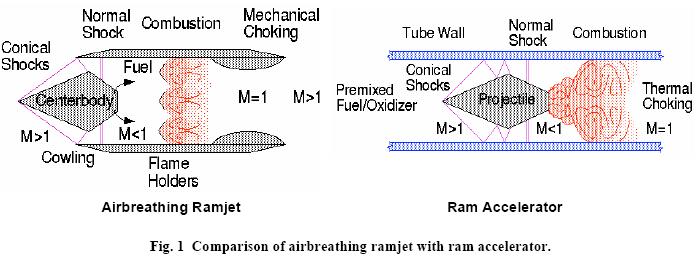
Comparison to air breathing rocket
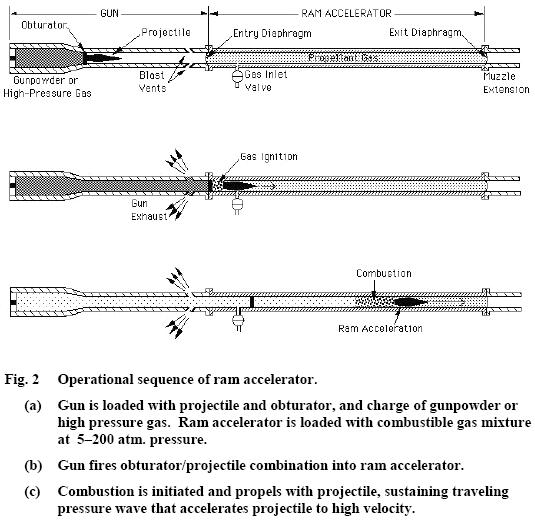
The firing sequence of a ram accelerator

Different from a regular big gun
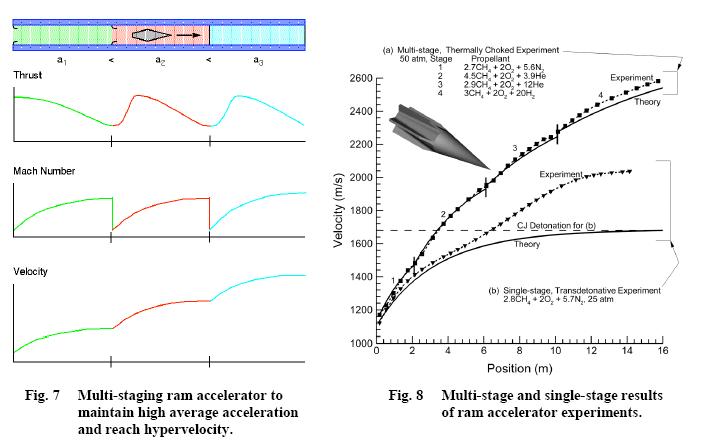
Multiple stages of acceleration
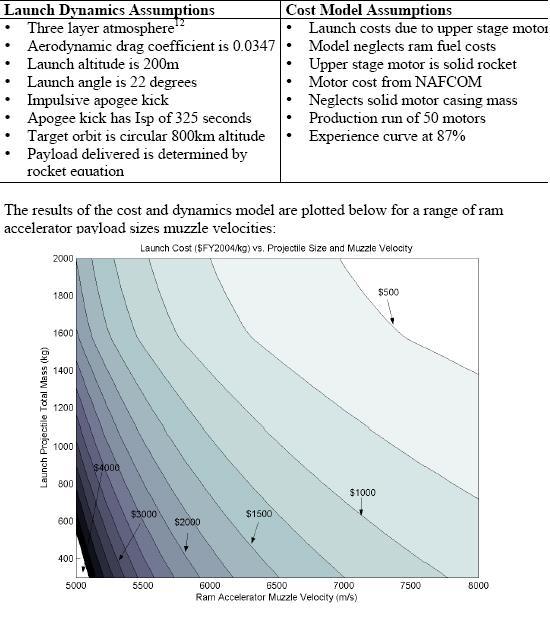
Projectile mass and launch speed determine the cost per kilogram
Another alternative is the magnetic launch ring system by Launchpoint. I had covered this before.



The first magnetic launch systems are expected to propel payloads into orbit at a cost of roughly $750/lb (1650/kg). The total cost to orbit might eventually drop below $100/lb ($220/kg). New Scientist had more details
The launch ring would be very similar to the particle accelerators used for physics experiments, with superconducting magnets placed around a 2-kilometre-wide ring. The cost per pound to orbit is about $6,000 for the space shuttle; it is estimated that if the Launch Ring is used 300 times per year, the cost would be about $745 per pound. If the launch rate reached 3000 launches per year, they calculate that would drop to $189 per kilogram.
There is some plasma hypersonic technology which might also be developed for cheap launch. It has some secret CIA and other technology. Some secret black program version of hot structures technology to control the heat problem. Paul Werbos is a champion of this plasma hypersonic technology Paul is a program director at the NSF and has a history with NASA and the IEA
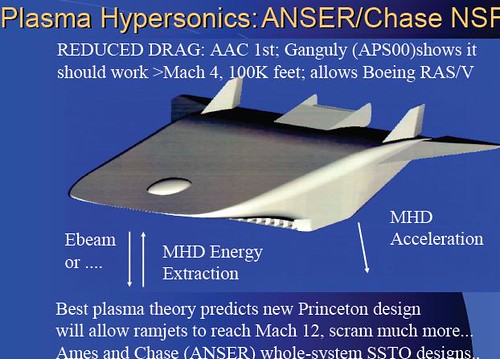
This would take $30 million to maintain existing research and $150 million to make significant progres and $10-15 billion for full development. The near term design has passed peer review.
FURTHER READING:
Space based solar power technical brief
State of the rocket launch vehicle part 1 at space review

Brian Wang is a Futurist Thought Leader and a popular Science blogger with 1 million readers per month. His blog Nextbigfuture.com is ranked #1 Science News Blog. It covers many disruptive technology and trends including Space, Robotics, Artificial Intelligence, Medicine, Anti-aging Biotechnology, and Nanotechnology.
Known for identifying cutting edge technologies, he is currently a Co-Founder of a startup and fundraiser for high potential early-stage companies. He is the Head of Research for Allocations for deep technology investments and an Angel Investor at Space Angels.
A frequent speaker at corporations, he has been a TEDx speaker, a Singularity University speaker and guest at numerous interviews for radio and podcasts. He is open to public speaking and advising engagements.


Comments are closed.